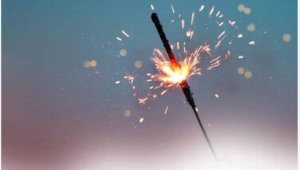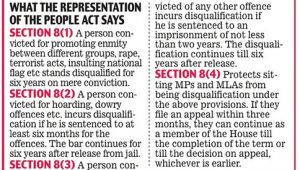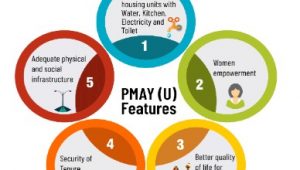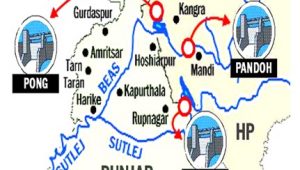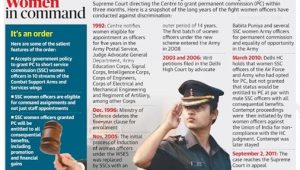
Current Affairs 23 March 2021
- Increase interval between two doses of Covishield, says Centre
- Protection is enhanced if the second dose of Covishield is administered between 6-8 weeks, but not later than the stipulated period of 8 weeks.
- This decision of revised time interval between two dose is applicable only to Covishield and not Covaxin.
- The ministry said the interval between the two doses of Covishield had been revisited by the National Technical Advisory Group of Immunization (NTAGI) and subsequently by the National Expert Group on Vaccine Administration for Covid-19 (NEGVAC).

- COVISHIELD
- Covishield is the name given to an Oxford-AstraZeneca Covid-19 vaccine candidate.
- Which is technically referred to as AZD1222 or ChAdOx 1 nCoV19.
- Developed by the University of Oxford in collaboration with Swedish-British drug maker AstraZeneca.
- Covishield continues to be the most used vaccine in India.
- Over 92% of all doses administered in India until March 20 was Covishield.
- Serum Institute of India (SII) is the manufacturing partner in India
- It is based on a weakened version of a common cold virus or the adenovirus that found in chimpanzees.
- The viral vector contains the genetic material of the SARS-CoV-2 spike protein (protrusions) present in the outer surface of the virus that helps it bind with the human cell.
- COVAXIN
- Developed by Bharat Biotech, Hyderabad in collaboration with Indian Council of Medical Research’s National Institute of Virology, Pune
- It is inactivated vaccine which is developed by inactivating (killing) the live microorganisms it causes the disease.
- This destroys the ability of the pathogen to replicate, but it keeps intact so that immune system can still recognize it and produce an immune response.
- COVAXIN is expected to target more than just the spike protein.
- COVAXIN is more likely to work against newer variants of the virus, including the UK variant, as it contains immunogens from other genes in addition to those spike protein.
- National Technical Advisory Group of Immunization
- The primary purpose of NTAGI is to provide technical resources, supplying guidance and recommendations to national policy makers and programme managers to enable them to make evidence-based immunization related policy and program decisions.
- Fourth firm ties to make Sputnik V
- Virchow Biotech of Hyderabad had entered into an agreement with RDIF (Russian Direct Investment Fund) to produce up to 200 million doses per year of COVID-19 Vaccine Sputnik in India
- Others are
- Hetero Group – 100 million doses/year
- Gland Pharma – 252 million doses/year
- Stelis Biopharma – 200 million doses/year

- Sputnik V
- The efficacy of Sputnik V was reported at 91.6%
- This vaccine has been approved in 55 countries (Excluding India)
- This the first COVID-19 Vaccine to be registered globally
- Developed by the Gamaleya Centre and supported by RDIF
- Amid protests, LS passes GNCTD amendment Bill
- The new Bill defines that the word ‘Government’ in Delhi means L-G (Lieutenant Governor).
- Parliamentary democracy, with a cabinet form of government, is part of the Basic Structure of the Indian Constitution.
- And makes it mandatory for the elected government in the National Capital Territory to take to opinion of the L-G before any executive action.
- Bill was passed by a voice vote.
- Government of National Capital Territory of Delhi (Amendment) Bill (GNCTD) 2021.
- The bill is an assault on the federal structure of the country – Violating constitutional provisions.
- Why assembly elections in Delhi should be held if all the powers were to be given to the L-G.
- Bill becomes an Act only after the bill is passed in Rajya Sabha and Signed by the President of India.
- Rajasthan brings private medical colleges within RTI Act’s purview
- The institutions like schools, colleges and hospitals which received “substantial aid” from the government in the form of land at discount rate were bound to give information to the citizens under RTI
- Non government organizations receiving financing from the government were a public authority under the provisions of RTI Act
- Right to Information (RTI) Act, 2005

5. U.S. Secretary of Defence Lloyd Austin’s visit to New Delhi
-
- The visit just after the first ever Quad leaders’ summit, confirms the U.S.’s focus on greater maritime cooperation in the Indo-Pacific.
- On the bilateral front, the two sides agreed to boost their defence relationship through the use of three foundational agreements
- LEMOA
- COMCASA
- BECA
- As well as increase in cooperation in the areas of information sharing and logistics, artificial intelligence, space and build more linkages with the U.S. Commandos.
- While Mr. Austin made it clear that the Biden Administration is committed to CAATSA sanctions against all countries procuring high-value Russian Military Hardware.
- He also said the determination on India would only come after New Delhi takes delivery of the S-400 missile system.
- LEMOA – Logistics Exchange Memorandum of Agreement
- It is a Military agreement between Armed Forces of India and the USA
- It gives access to designated military facilities on either side for refueling and replenishment.
- The agreement also covers, Joint Exercises, Training, Humanitarian Assistance and Disaster relief.
- The agreement encompasses medical services, training, spare parts, fuel, food, water, transportation, clothing, repair, maintenance, and communication services.
- It does not provide for the establishment of any bases or basing arrangements.
- COMCASA – Communications Compatibility and Security Agreement
- Signed between Indian and U.S. in September- 2018
- Valid for 10 years.
- The agreement facilitates India to use the United State’s encrypted communications equipment and systems.
- India and the U.S. military commanders, aircraft and ships can communicate through secure networks in peace and war.
- In addition to the above, it also paved the way for the transfer of communication security equipment from the US to India to facilitate interoperability.
- BECA – Basic Exchange and Cooperation Agreement
- This will enable both India and U.S. to share geospatial information on maps and satellites for defence purposes
- Geospatial information is required while sailing a ship, flying an aircraft, fighting wars, locating targets, etc.

6. KEN- BETWA INTERLINKING
- On the occasion of World Water Dayon April 22, a memorandum of agreement was signed between Union Minister of Jal Shakti and the chief ministers of Madhya Pradesh and Uttar Pradesh to implement the Ken-Betwa Link Project (KBLP).
- The agreement was signed through a video conference in the presence of Prime Minister Narendra Modi.
Ken Betwa Link Project
- The Ken-Betwa Link Project is the first project under the National Perspective Plan for interlinking of rivers. Under this project, water from the Ken River will be transferred to the Betwa River. Both these rivers are tributaries of river Yamuna.

- Ken-Betwa Link Project has two phases :
- Phase-I – one of the components — Daudhan dam complex and its appurtenances like Low Level Tunnel, High Level Tunnel, Ken-Betwa link canal and Power houses — will be completed.
- Phase-II- three components — Lower Orr dam, Bina complex project and Kotha barrage — will be constructed.
- According to the Union Jal Shakti Ministry, the project is expected to provide annual irrigation of 10.62 lakh hectares, drinking water supply to about 62 lakh people and also generate 103 MW of hydropower.
- Benefits of the KBLP
- The Ken-Betwa Link Project lies in Bundelkhand, a drought-prone region, which spreads across 13 districts of Uttar Pradesh and Madhya Pradesh.
- According to the Jal Shakti Ministry, the project will be of immense benefit to the water-starved region of Bundelkhand, especially in the districts of Panna, Tikamgarh, Chhatarpur, Sagar, Damoh, Datia, Vidisha, Shivpuri and Raisen of Madhya Pradesh and Banda, Mahoba, Jhansi and Lalitpur of Uttar Pradesh.

- It will pave the way for more interlinking of river projects to ensure that scarcity of water does not become an inhibitor for development in the country, the Ministry said.
- clearances required for a river-linking project:
- clearances required for a river-linking project
- Forest Clearance and Environmental clearance (Ministry of Environment & Forests)
- Resettlement and Rehabilitation (R&R) Plan of Tribal Population (Ministry of Tribal Affairs)
- Wildlife clearance (Central Empowered Committee).

7. Plea against challenge on places of worship act
- Places of Worship (Special Provisions) Act, 1991The Supreme Court asked the Centre to respond to a plea challenging thePlaces of Worship (Special Provisions) Act, 1991 which freezes the status of places of worship as it was on 15th August, 1947.
- In agreeing to examine the law, the court has opened the doors for litigation in various places of worship across the country including Mathura and Varanasi.
- It seeks tomaintain the “religious character” of places of worship as it was in 1947 except in the case of Ram Janmabhoomi-Babri Masjid dispute, which was already in court.
Provisions:
- Section 3 of the Act bans the conversion of a place of worshipor even a section of it into a place of worship of a different religious denomination or of a different segment of the same religious denomination.
- Section 4(2) says thatall suits, appeals or other proceedingsregarding converting the character of a place of worship (that were pending on 15th August, 1947) will come to end when the Act commences and no fresh proceedings can be filed.
- However, legal proceedings can be initiated if the change of status took place after the cut-off date of 15thAugust, 1947 (after enactment of the Act).
- The Act also imposes a positive obligation on the State to maintain the religious characterof every place of worship as it existed at the time of Independence.
- This legislative obligation on the State to preserve and protect the equality of all faiths is an essential secular feature and one of the basic features of the Indian Constitution.
Exemption:
- The disputed site atAyodhya was exemptedfrom the Act. Due to this exemption, the trial in the Ayodhya case proceeded even after the enforcement of this law.
- Besides the Ayodhya dispute, the Act also exempted:
- Any place of worship which is an ancient and historical monument or an archaeological sitecovered by the Ancient Monuments and Archaeological Sites and Remains Act, 1958.
- A suit that has been finally settled or disposed of.
- Any dispute that has been settled by the parties or conversion of any place that took place by acquiescence before the Act commenced.







